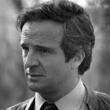We'll always have Casablanca: the life, legend, and afterlife of Hollywood's most beloved movie
Description
More Details
Table of Contents
From the Book
Similar Titles From NoveList
Similar Authors From NoveList
Published Reviews
Booklist Review
*Starred Review* Here's the best thing about this book: whether you're a Casablanca devotee or just a film-history buff, the story of how the iconic movie got made and what the world made of it is downright fascinating, an absolute page-turner, even a kind of narrative nonfiction thriller. The 1942 film began life as an unproduced stage play, Everybody Comes to Rick's, conceived by a schoolteacher who wanted to voice his concerns over German anti-Semitism in the years leading up to WWII (a message to people who didn't think Hitler was a real threat). Warner Brothers bought the film rights, threw a lot of different writers at the project, changed the story around a bit, rushed the picture into theaters to capitalize on pro-American war news (the Allies had just invaded North Africa), and saw solid but not spectacular box-office returns. Isenberg capably recounts all this history, but his book isn't trying to compete with Aljean Harmetz's Round Up the Usual Suspects (1992), the definitive account of the making of Casablanca. Isenberg is telling a broader story about the history of the film and its cultural significance (it became a classic, he argues, in large part because it reinforced America's vision of itself as tough, resourceful, morally upstanding, and heroic). Along the way, the author dispels some cherished myths about the movie despite the legend, Ronald Reagan and George Raft were never serious contenders to play Rick Blaine and tosses in a few nifty surprises, such as the revelation that Dooley Wilson, who played Sam, couldn't actually play the piano. The author does some very nice detective work, too, poring over script drafts and production records to nail down who exactly wrote the movie. Yes, the credited screenwriters played roles, but some of the film's most famous lines probably came from others (unconfirmed stories, for example, suggest that director Michael Curtiz may have given us the line, Here's looking at you, kid). A valuable and insightful addition to the literature of film history.--Pitt, David Copyright 2016 Booklist
Publisher's Weekly Review
Isenberg (Edgar G. Ulmer: A Filmmaker at the Margins) has created a thorough and impassioned account of the making of the 1942 Hollywood classic starring Humphrey Bogart and Ingrid Bergman. He begins with Casablanca's modest origins in an unproduced three-act play and ends with its lasting cultural impact. Along the way, he makes a strong case for the film as an ideal example of studio collaboration. Isenberg emphasizes the contributions of nearly everyone at Warner Brothers, including producer Hal B. Wallis, director Michael Curtiz, screenwriters Julius and Philip Epstein and Howard Koch, and some of the studio's best contract players (Sydney Greenstreet, Paul Henreid, Peter Lorre, and Claude Rains). Diligently researched and incorporating extensive interviews and documentation, the book is commendable for its attention to the most mundane details of filmmaking. Nevertheless, readers expecting a critical study might find the author's exhaustive admiration for his subject a bit wearing. As Irish film critic Paul Whitington astutely observes in the book's introduction, "Maybe there are better films than Casablanca, but there are probably none better loved." Agent: Zoe Pagnamenta, Zoe Pagnamenta Agency. (Feb.) © Copyright PWxyz, LLC. All rights reserved.
Library Journal Review
Born from the unproduced play Everybody Comes to Rick's, the 1942 film Casablanca quickly became one of the most quoted and beloved movies of all time. Although its plot of wartime refugees trapped in the north African city was most timely, it continues to speak to new generations of film buffs. This is an exhaustive look at the making of the film, its censorship battles, early pushback from isolationists, casting coups (contrary to legend, Ronald Reagan and George Raft were never considered for the role of saloon keeper Rick), later jockeying for credit after the film's success, and most particularly, real-life refugees from Hitler's Europe taking on several parts. Isenberg (culture & media, The New School; Edgar G. Ulmer) tracks down even the most insignificant detail on the creation of this film. He notes the many unsuccessful attempts to revive the work in remakes, reboots, sequels, television shows, even a musical. Finally, the book ponders why certain themes continue to be relevant today. VERDICT This highly recommended title thoroughly explores studio politics and the political realities, while giving new fans and critics a chance to weigh in on what Casablanca means to them. [See Prepub Alert, 8/26/16.]-Stephen Rees, formerly with Levittown Lib., PA © Copyright 2016. Library Journals LLC, a wholly owned subsidiary of Media Source, Inc. No redistribution permitted.
Kirkus Book Review
A film scholar explores the legendary history and lasting appeal of Casablanca (1942).Casablanca remains one of the most memorable films ever produced. A star-making vehicle for its two lead actors, Humphrey Bogart and Ingrid Bergman, it has served as a textbook example of how the studio system, in this case Warner Brothers, applied its best efforts and assets in producing a film of exceptional merit. As Isenberg (Screen Studies/The New School; Edgar G. Ulmer: A Filmmaker at the Margins, 2014, etc.) notes, the film required complex collaborations among several of Warner's most talented writers, composers, set decorators, and cinematographers, and it featured iconic performances by popular contract players such as Claude Rains, Peter Lorre, and Sydney Greenstreet. The original source, an unproduced play titled Everyone Comes to Rick's, didn't appear destined for greatness when it sold to the studio in late 1941. Yet under the guidance of studio heads Jack Warner and Hal Wallis, and aligning with the timely events of a country about to enter the war, the prescient material would have an urgent appeal. "Thanks not only to the fortuitous timing of its release," writes the author, "but also to the sly intermingling of history, politics, and fiction, Casablanca gave viewers the chance to reflect on the current state of the worldwhile also feeding their appetite for entertainment at the movieslarger-than-life characters, exotic backdrops, heart-wrenching romance, and plenty of glimpses of universally identifiable, basic humanity." Isenberg has scrupulously researched the developmental details of the production, and he offers an interesting dissection of the legendary script contributions and in-depth background histories of the many bit players featured in the film. However, in focusing the latter portion of the book on the film's continuing impact, he tends to broadly overstate his message, expansively recounting every film revival, TV and theatrical offshoot, parody, and just about every example where there has been occasion for reference over the last several years. These exhaustive details are likely to interest only the most die-hard fans of the film. A thoroughly researched and frequently enlightening but somewhat ponderous tribute to a beloved classic. Copyright Kirkus Reviews, used with permission.
Booklist Reviews
*Starred Review* Here's the best thing about this book: whether you're a Casablanca devotee or just a film-history buff, the story of how the iconic movie got made and what the world made of it is downright fascinating, an absolute page-turner, even a kind of narrative nonfiction thriller. The 1942 film began life as an unproduced stage play, Everybody Comes to Rick's, conceived by a schoolteacher who wanted to voice his concerns over German anti-Semitism in the years leading up to WWII (a message to people who didn't think Hitler was a real threat). Warner Brothers bought the film rights, threw a lot of different writers at the project, changed the story around a bit, rushed the picture into theaters to capitalize on pro-American war news (the Allies had just invaded North Africa), and saw solid—but not spectacular—box-office returns. Isenberg capably recounts all this history, but his book isn't trying to compete with Aljean Harmetz's Round Up the Usual Suspects (1992), the definitive account of the making of Casablanca. Isenberg is telling a broader story about the history of the film and its cultural significance (it became a classic, he argues, in large part because it reinforced America's vision of itself as tough, resourceful, morally upstanding, and heroic). Along the way, the author dispels some cherished myths about the movie—despite the legend, Ronald Reagan and George Raft were never serious contenders to play Rick Blaine—and tosses in a few nifty surprises, such as the revelation that Dooley Wilson, who played Sam, couldn't actually play the piano. The author does some very nice detective work, too, poring over script drafts and production records to nail down who exactly wrote the movie. Yes, the credited screenwriters played roles, but some of the film's most famous lines probably came from others (unconfirmed stories, for example, suggest that director Michael Curtiz may have given us the line, "Here's looking at you, kid"). A valuable and insightful addition to the literature of film history. Copyright 2016 Booklist Reviews.
Library Journal Reviews
For the 75th anniversary of Casablanca's release, Isenberg, director of screen studies and professor of culture and media at the New School, gives us deep background on the making of the film and considers its ongoing popularity. Hey, the film might even be rereleased in movie theaters!
Copyright 2016 Library Journal.Library Journal Reviews
Born from the unproduced play Everybody Comes to Rick's, the 1942 film Casablanca quickly became one of the most quoted and beloved movies of all time. Although its plot of wartime refugees trapped in the north African city was most timely, it continues to speak to new generations of film buffs. This is an exhaustive look at the making of the film, its censorship battles, early pushback from isolationists, casting coups (contrary to legend, Ronald Reagan and George Raft were never considered for the role of saloon keeper Rick), later jockeying for credit after the film's success, and most particularly, real-life refugees from Hitler's Europe taking on several parts. Isenberg (culture & media, The New School; Edgar G. Ulmer) tracks down even the most insignificant detail on the creation of this film. He notes the many unsuccessful attempts to revive the work in remakes, reboots, sequels, television shows, even a musical. Finally, the book ponders why certain themes continue to be relevant today. VERDICT This highly recommended title thoroughly explores studio politics and the political realities, while giving new fans and critics a chance to weigh in on what Casablanca means to them. [See Prepub Alert, 8/26/16.]—Stephen Rees, formerly with Levittown Lib., PA
Copyright 2016 Library Journal.Publishers Weekly Reviews
Isenberg (Edgar G. Ulmer: A Filmmaker at the Margins) has created a thorough and impassioned account of the making of the 1942 Hollywood classic starring Humphrey Bogart and Ingrid Bergman. He begins with Casablanca's modest origins in an unproduced three-act play and ends with its lasting cultural impact. Along the way, he makes a strong case for the film as an ideal example of studio collaboration. Isenberg emphasizes the contributions of nearly everyone at Warner Brothers, including producer Hal B. Wallis, director Michael Curtiz, screenwriters Julius and Philip Epstein and Howard Koch, and some of the studio's best contract players (Sydney Greenstreet, Paul Henreid, Peter Lorre, and Claude Rains). Diligently researched and incorporating extensive interviews and documentation, the book is commendable for its attention to the most mundane details of filmmaking. Nevertheless, readers expecting a critical study might find the author's exhaustive admiration for his subject a bit wearing. As Irish film critic Paul Whitington astutely observes in the book's introduction, "Maybe there are better films than Casablanca, but there are probably none better loved." Agent: Zoe Pagnamenta, Zoe Pagnamenta Agency. (Feb.) Copyright 2016 Publishers Weekly.
































